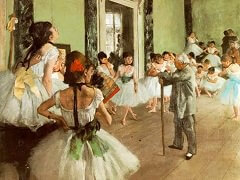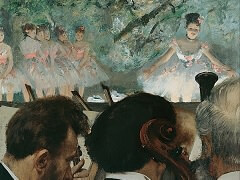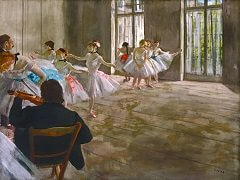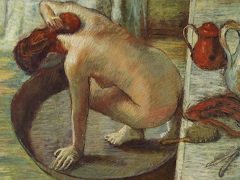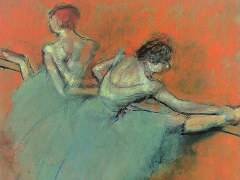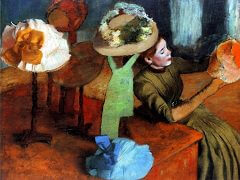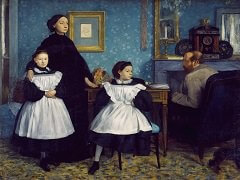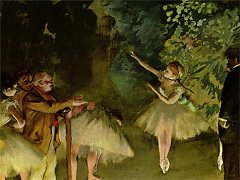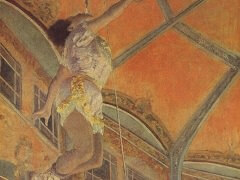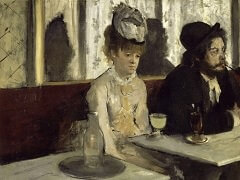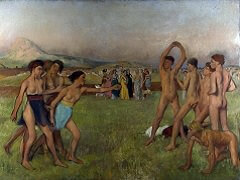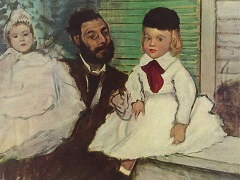A Carriage at The Races, 1870 by Edgar Degas
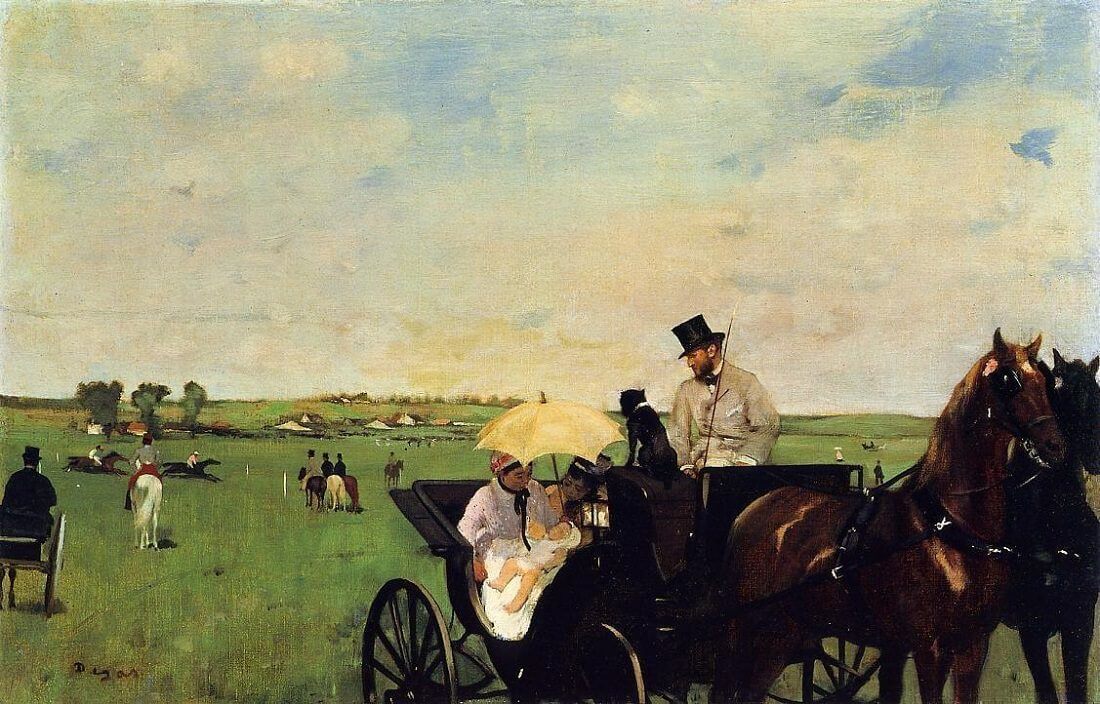
DEGAS' EYE AT THE RACES OFTEN STRAYED to the spectators as well as the jockeys, and in this delightful small picture he has given us a scene of elegance and charm completely embodying French life of the period. In its day the composition must have seemed unusually daring, for the principal element in the design - the victoria of the gentleman driver - is placed in the bottom right of the canvas and sharply cut by the frame. Degas undoubtedly derived this point of view from photography, in which he had become deeply interested at this time.
More important today is the controlled artistry with which the whole picture is planned and painted. "The most beautiful things in art come from renunciation," the painter was fond of saying, and he has here severely limited his colors to a few finely attuned and greyed hues. Here and there a stronger note balances the cool springtime green of the field and the delicate neutral sky, itself a miracle of subtle, atmospheric painting. Compared to the broken color and striking effects of light that the Impressionists were then employing, A Carriage at the Races seems definitely traditional, harking back to the harmonies of Corot rather than paralleling the color experiments of Monet. The firm, decisive drawing contributes to the clarity of the conception while the flat technique recalls the fact that Degas insisted that "nature was smooth."
Amusing, as social comment, is the insistence of the English character of the scene, the victoria, the driver's top hat, the bulldog. English styles were then much the fashion in France among the upper classes.



